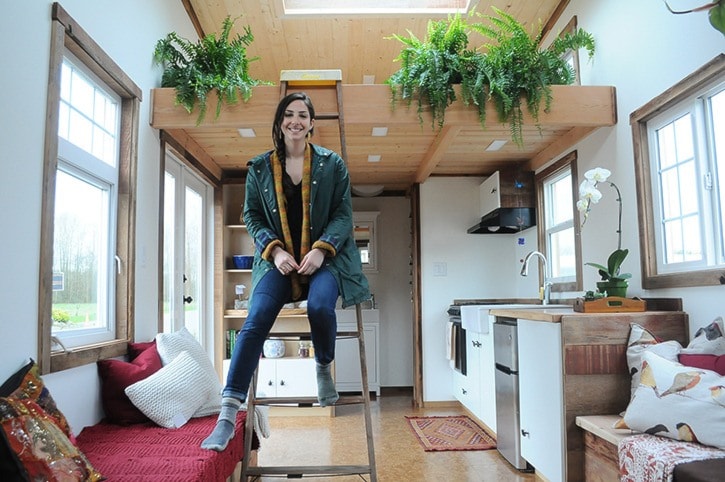The Peninsula Homeless to Housing (PH2H) task force invited the BC Tiny House Collective to its monthly meeting last week to learn how the tiny-home movement could relieve the housing crisis that stresses the Lower Mainland.
"Tiny houses are just one possible answer to the housing crisis," PH2H member Judy Peterson told the group Friday. "There's many places in the United States and all over the world... where they're using this as an answer for homelessness."
Peterson, who's grandson is building a tiny house in Saanich, said she views tiny-house living as a lifestyle that's intriguing to a portion of the population.
She said the most frustrating part of building a tiny house is that it cannot be done legally.
"You need to go quote-unquote underground. We built it on our son's lot. We tried very hard to do it correctly with the bylaws," Peterson said.
In dealing with Saanich city officials, Peterson said, bylaw officers would be required to act if the city received complaints from neighbours.
"You couldn't miss it. People from the neighbourhood were coming over and lending things. I think everybody's fascinated about it," Peterson said.
Tiny houses are usually buildings less than 500 square feet that include a place to wash, sleep and cook. They're usually highly customized and are – in most cases – mobile.
An idea, Peterson said, would be to allow tiny houses to be situated on vacant lots that are going through a redevelopment process.
"I think it's something that's worth exploring," she said.
Samantha Gambling, co-founder of the BC Tiny House Collective – created with the goal of incorporating tiny homes in future and existing neighbourhoods – described her 220-square-foot tiny house to PH2H members, sharing photographs.
This Saturday, Gambling is showing off her $75,000 tiny house at West Coast Gardens (1420 172 St.) from 12-4 p.m.
After Friday's meeting, she told Peace Arch News there are three main barriers surrounding the issue; cultural, political and economical.
On the cultural side, Gambling said it's a lot of NIMBYism (not in my back yard), and the homes are often viewed as RV accommodation.
"There's that stigma, seen as a shanty town... What do they call us? Rogue, outlaws, or whatever. There's lots of cultural barriers to address."

The political barriers vary from municipality to municipality and bylaws have not kept up with the pace of the movement, Gambling noted.
"It's harder the more urban you go. I know in certain rural areas they've accommodated tiny houses."
The third barrier is fitting tiny houses in the Lower Mainland housing framework, she added.
"I don't necessarily want to own the land that I'm situated on, as long as I have my home to go back to. How can we, now speaking as the collective, come together to communally own amenities and land within the current economic framework?"
Judith Robertson, manager of area planning and development north for the City of Surrey, said she's familiar with the tiny-house movement, but said city staff have not been pressured to look into creating regulations for tiny houses.
"We're certainly aware that it's occurring in other jurisdictions. As far as I know, we haven't had inquires as to 'can we build a small house?' It's usually, 'how big of a house can we build?'" Robertson said.
According to Surrey's bylaw, a single family dwelling needs to have at least 900 square feet of floor area on the ground. The building width cannot be less than seven metres.
White Rock planning manager Carl Isaak said he would echo Robertson's comment, noting his city does not have minimum dwelling sizes in its bylaws.
"We haven't had any inquiries for building (tiny houses). I think the high land values means that most people want to maximize what they can build on a property, rather than a tiny-house approach," he told PAN Monday.
